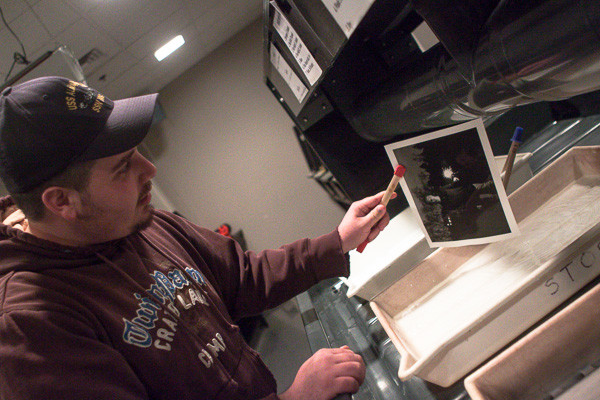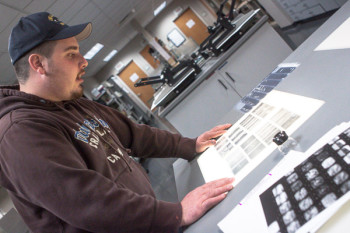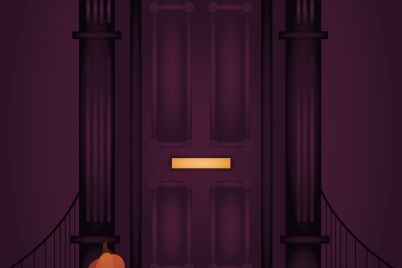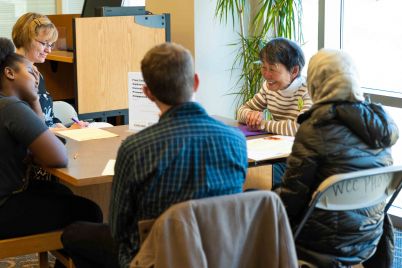
Doug Miller, a 28-year-old photography student of Milan, demonstrates proper techniques in the darkroom. EJ Stout | Washtenaw Voice
By SOFIA LYNCH
Features Editor
In a world that has become technology obsessed and digitally driven, it is easy for people to assume that film photography is a thing of the past. Although the tides may be changing, photographers like Jennifer Baker, a full-time faculty member of photography at Washtenaw Community College contends that film is far from being swept out to sea.
For her sabbatical, Baker chose to compare seven community colleges, both in and out of state, that had photography programs similar in size and scope to WCC’s. Of the seven schools, she made site visits to four of them.
When she returned, she brought her findings to the other full-time faculty in the photography program, Don Werthmann and Terry Abrams, and they all agreed they needed to strengthen the program’s emphasis on film.
“All but one of the schools I studied had a strong film component as well as digital,” Baker said. “So there were strong indications from the study that supported the movement back to a stronger emphasis with film.”
With film remaining a strong presence in fine art photography, Baker reported an uptick in the number of students interested in darkroom photography.
The decision of the photography program’s full-time faculty was to revise the existing darkroom courses to create one new and improved class: Film and Darkroom.

Doug Miller, 28, a photography student from Milan, works in the photography department as a lab assistant when he is not taking classes in the darkroom at WCC. In the coming fall semester, the photography program will be phasing out the five-week Intro to Darkroom class for a new 15-week course, Film and Darkroom.
EJ Stout | Washtenaw Voice
“We have one of the best darkrooms that I’ve ever seen; so it’s a great opportunity for us to get more utilization out of the facility that is only a little over 10 years old,” Abrams said.
Previously, WCC’s photography program offered a five-week, one credit Intro to Darkroom course that was a prerequisite for the 15-week Darkroom Techniques course. However, along with the results of Baker’s sabbatical study, it was clear to the faculty that this wasn’t enough time to lay the foundational skills for students as well as get them interested in film.
“Trying to cover all of that material in 15 hours, it was rushing everyone through so much,” said photography instructor, Tim Householder, who has taught the intro class. “So by moving away from the five-week class to the 15-week class, I think it’s going to make people more comfortable and get more satisfying results in the darkroom.”
Outside of the matter of increased contact hours, Baker cited three reasons why increasing the emphasis on film was important to the students and the photography program at large: It has a stronger emphasis on camera operation skills; it gives students an early experience in pre-visualization, and it slows down their creative process.
“I think it helps when it slows you down as a photographer because you only have 36 exposures as opposed to 3600 on a digital card. So it makes you pay more attention to what you’re pointing your camera at when you fire the shutter,” said Householder.
“There’s a certain kind of visceral experience with light and chemicals and image making that happens through the film and darkroom process that students don’t always experience with the digital process,” Abrams said.
In addition to the pedagogical benefits of the revision of this course, Baker pointed out that with the class having no prerequisites and film cameras available for check out, it opens up the darkroom to the community as well.
“It’s a special thing that we’re able to offer because we have the facilities and the equipment to do it. So we’re incredibly fortunate to be able to offer courses like this,” Baker said.
In addition to the Film and Darkroom course, WCC also offers two other film classes: Large Format Photography and Alternative Processes.


